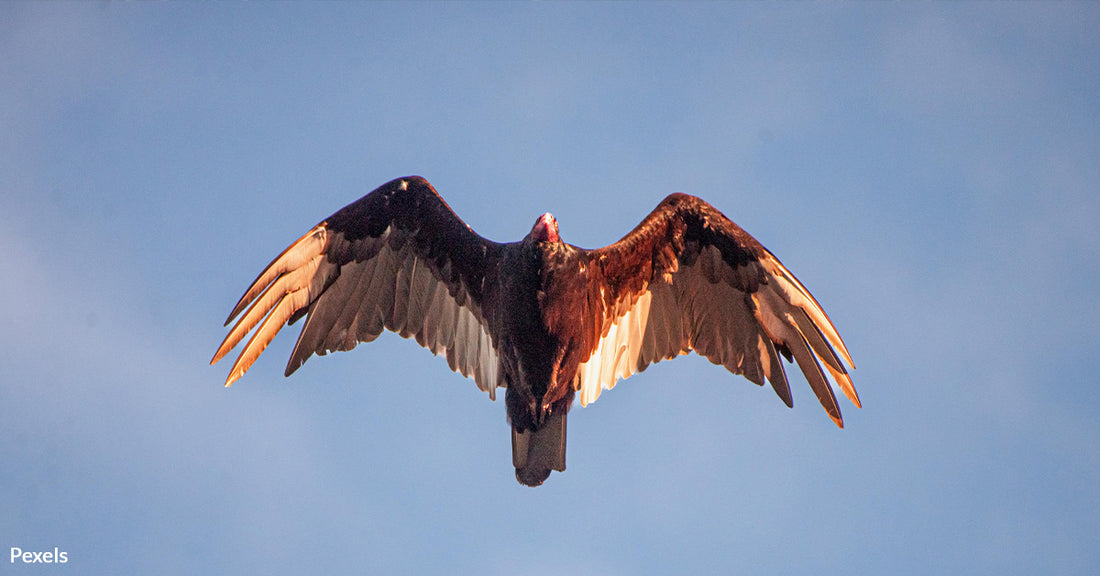Endangered California Condors Suffer From Illegal Hunting, Lead Poisoning, Habitat Loss
Matthew Russell
The California condor, with its impressive wingspan and distinctive bald head, is North America's largest land bird. Despite its grandeur, the species teeters on the edge of extinction.
Once widespread across the continent, the condor's population dwindled to a mere 22 individuals in the 1980s due to a range of human-caused threats. Today, conservation efforts have increased their numbers, but significant dangers remain.

Lead Poisoning's Persistent Threat
Lead poisoning is the most severe threat facing California condors today. These majestic birds often ingest lead fragments when scavenging on carcasses left by hunters. The soft lead-core bullets used in hunting shatter upon impact, leaving dangerous residues that the condors unknowingly consume. This ingestion can lead to severe poisoning, which has been a leading cause of death among these birds.
Studies have shown that over 50% of condor deaths in southern Utah, for example, are directly attributable to lead poisoning, as reported by Utah State Magazine. Efforts to mitigate this issue include programs encouraging hunters to switch to non-lead ammunition.
The Utah Division of Wildlife Resources (UDWR) and The Peregrine Fund have implemented voluntary programs offering free non-lead ammunition to hunters in areas where condors are known to forage. Despite these efforts, many hunters continue to use lead-based bullets, driven by habit or cost considerations, according to the Center for Biological Diversity.

Illegal Killings and Habitat Loss
While lead poisoning remains the primary concern, illegal shootings have also posed a significant threat to the California condor population. Recently, two condors were found dead from gunshot wounds in Utah, sparking an investigation by the U.S. Fish and Wildlife Service (USFWS) and local wildlife authorities, as reported by St. George News.
The shooting of these protected birds not only undermines conservation efforts but also highlights the ongoing challenges in protecting this species. Additionally, habitat loss due to urban development and agricultural expansion continues to threaten condor populations.
Areas such as Tejon Ranch, a biodiversity hotspot, have been under constant pressure from proposed developments. Environmental groups have been active in opposing these projects, recognizing the critical role these habitats play in the survival of the condor, according to the Center for Biological Diversity.

A Race Against Time
The plight of the California condor is a story of both remarkable resilience and ongoing struggle. Captive breeding programs, such as those managed by The Peregrine Fund at the World Center for Birds of Prey in Idaho, have been crucial in preventing the species' extinction. Since the 1980s, these programs have successfully reintroduced over 200 condors into the wild, as detailed by The Peregrine Fund.
These efforts have been complemented by legislative measures, including the Ridley-Tree Condor Preservation Act, which mandates the use of non-lead ammunition in condor habitats. However, the enforcement of such regulations and the voluntary nature of non-lead ammunition programs mean that these measures have not entirely eliminated the threat, the Center for Biological Diversity.
The illegal shooting of condors also remains a serious issue. The recent reward offered by the USFWS for information leading to the conviction of those responsible for shooting a condor in California underscores the severity of this threat. The penalties for harming these birds are substantial, reflecting their endangered status and the importance of protecting them, as reported by Newsweek.

Challenges and Hope
The road to recovery for the California condor is fraught with challenges. Despite significant efforts and some successes in increasing their population, the species remains critically endangered.
The combined threats of lead poisoning, illegal killings, and habitat loss continue to impede progress. However, there is hope. Ongoing research, education, and advocacy are crucial components of the conservation strategy. Engaging hunters and the broader public in the importance of using non-lead ammunition and protecting natural habitats is essential.
The story of the California condor serves as a poignant reminder of the impact humans can have on wildlife and the critical need for concerted conservation efforts. As we look to the future, the survival of the California condor will depend on sustained efforts and cooperation across all levels of society. Protecting these birds is not just about preserving a species; it's about safeguarding an important part of our natural heritage.
Click below an save our California condors!

